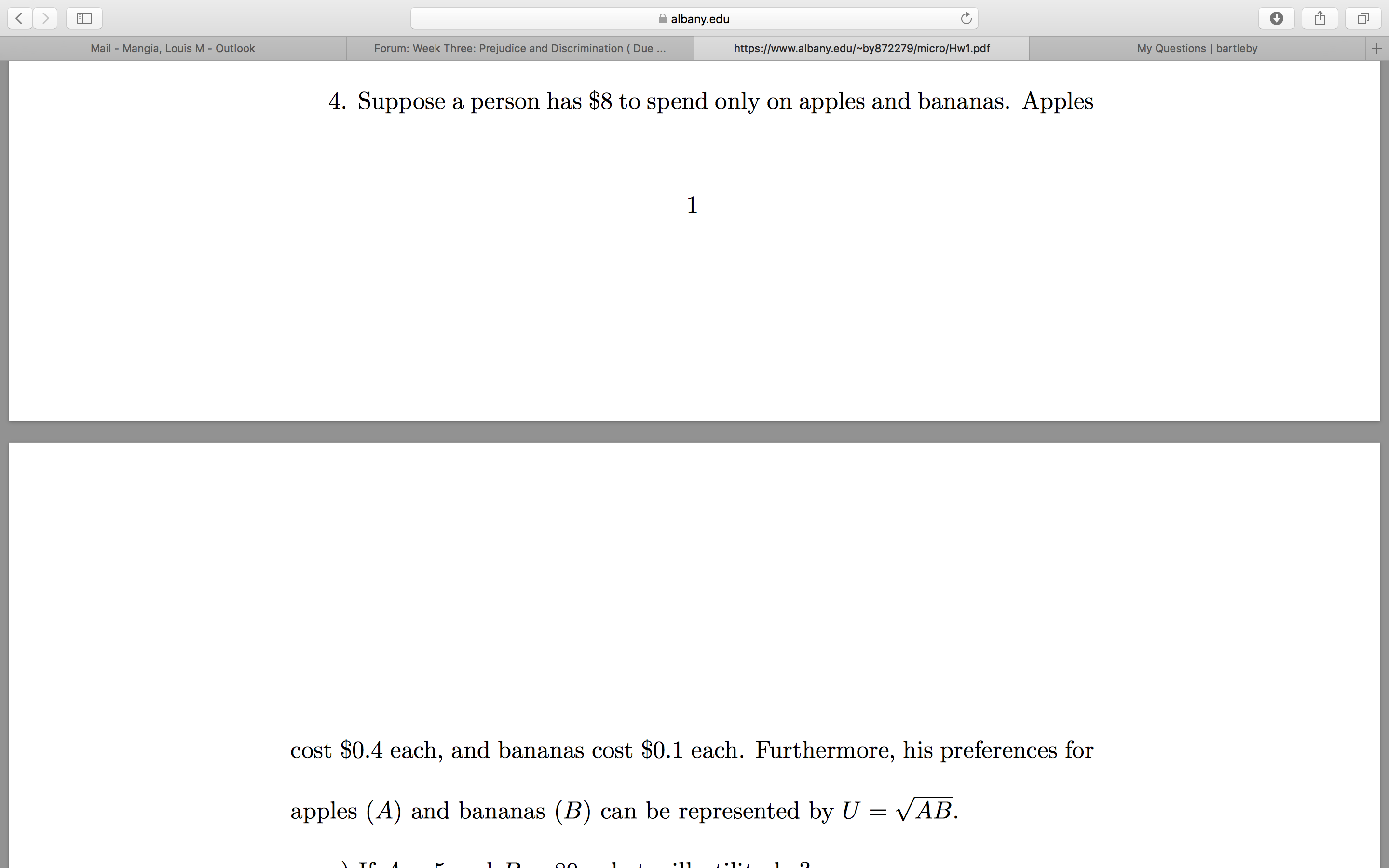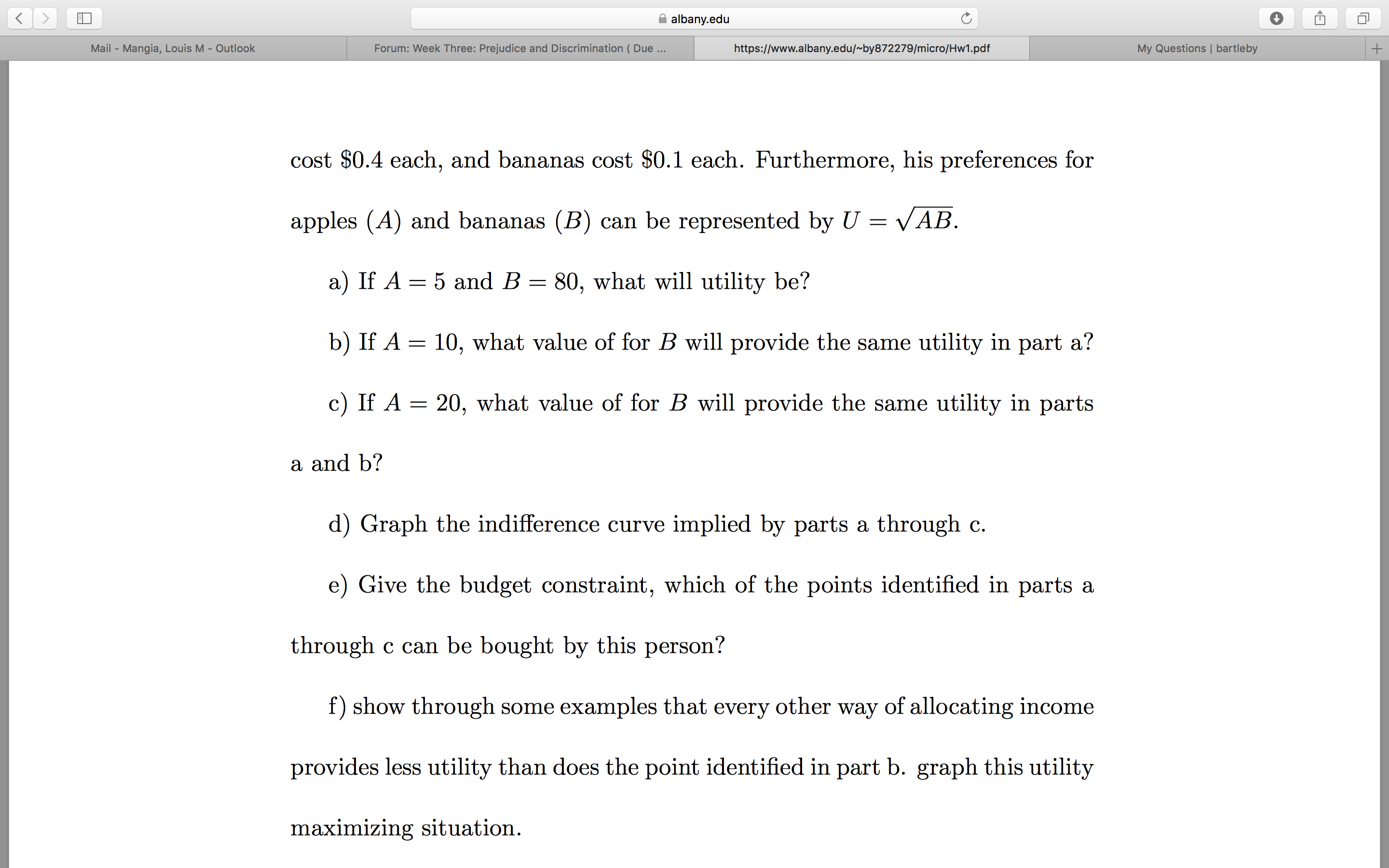albany.edu My Questions | bartleby Forum: Week Three: Prejudice and Discrimination ( Due... Mail - Mangia, Louis M - Outlook https://www.albany.edu/~by872279/micro/Hw1.pdf 4. Suppose a person has $8 to spend only on apples and bananas. Apples 1 cost $0.4 each, and bananas cost $0.1 each. Furthermore, his preferences for apples (A) and bananas (B) can be represented by U = VAB. •11 albany.edu My Questions | bartleby Mail - Mangia, Louis M - Outlook Forum: Week Three: Prejudice and Discrimination ( Due ... https://www.albany.edu/~by872279/micro/Hw1.pdf cost $0.4 each, and bananas cost $0.1 each. Furthermore, his preferences for apples (A) and bananas (B) can be represented by U = VAB. a) If A = 5 and B = 80, what will utility be? b) If A = 10, what value of for B will provide the same utility in part a? c) If A = 20, what value of for B will provide the same utility in parts a and b? d) Graph the indifference curve implied by parts a through c. e) Give the budget constraint, which of the points identified in parts a through c can be bought by this person? f) show through some examples that of allocating income other every way provides less utility than does the point identified in part b. graph this utility maximizing situation.
4. Suppose a person has $8 to spend only on apples and bananas. Apples
1
cost $0:4 each, and bananas cost $0:1 each. Furthermore, his preferences for apples (A) and bananas (B) can be represented by U = pAB.
a) If A = 5 and B = 80, what will utility be?
b) If A = 10, what value of for B will provide the same utility in part a? c) If A = 20, what value of for B will provide the same utility in parts
a and b?
d) Graph the indi§erence curve implied by parts a through c.
e) Give the budget constraint, which of the points identiÖed in parts a
through c can be bought by this person?
f) show through some examples that every other way of allocating income
provides less utility than does the point identiÖed in part b. graph this utility maximizing situation.


Trending now
This is a popular solution!
Step by step
Solved in 5 steps with 5 images


